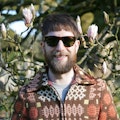Listening to the archive: A cross-cultural analysis of European wildlife sound archives, 1950 to the present
Wildlife sound archives emerged as sites of specialist scientific data sets within the 20th century, primarily as repositories of recordings for the study of animal sounds, and as reference libraries for the identification of species by scientific taxonomists and wildlife enthusiasts.
This research project will focus on the two largest wildlife sound archives in Europe: The British Library’s Wildlife and Environmental Sounds collection, and the Animal Sound Archive at the Museum für Naturkunde Berlin, to explore:
- how the archives were produced
- how archived sound recordings are maintained, circulated, and consumed
- how sound recording technologies, techniques, listening cultures, and ethics have shaped the objectives, functions, and uses of archived sound recordings
Sound archives
In the second half of the twentieth century, institutions across the world founded wildlife sound archives, consisting of audio recordings of wild and captive animals.
Facilitated by the advent of new recording technologies, these archives established themselves as important repositories of scientific data for bioacoustics research, which is the study of animal communication through sound, and as references libraries for the identification of animal species in the field by scientific taxonomists and wildlife enthusiasts.
WES and ASA
The two largest sound archives in Europe, in terms of the number of recordings held and species represented, are the British Library’s Wildlife and Environmental Sounds (WES) collection in London, and the Animal Sound Archive (ASA) in the Museum für Naturkunde Berlin.
Founded in 1969 by Patrick Sellar, a prolific amateur wildlife recordist, and Jeffery Boswall, an acclaimed wildlife filmmaker, the WES archive is now a part of the British Library’s Sound Archive in London, which totals 6.5 million recordings of all types, including oral history, music, and drama. Of this, the WES constitutes around 220,000.
The ASA has an earlier history, having been founded in 1951 by the East German zoologist and bioacoustician Günter Tembrock (1918-2011). The collection comprises approximately 120,000 sound recordings, and it is growing continuously through donations and the purchase of entire animal sound collections.
While initially recordings predominantly came from the Berlin and Brandenburg area, the archive now holds recordings from many regions across the globe that were added from the 1990s onwards.
Rare collections
Rare collections include those from the first GDR Antarctic expedition, the collections of the French ornithologist Jean-Claude Roché, the environmentalist and co-founder of the German Federation for the Environment and Nature Conservation, Gerhard Thielcke, and the collection of the Berlin-based zoologist Hildegard Strübing, a pioneer of biotremology.
Since 1995, the ASA has been part of the Museum für Naturkunde Berlin, one of three major museums of natural history in Germany, founded in 1810 as part of Humboldt-Universität zu Berlin.
Research questions
The project is animated by the following five research questions:
- How were the archives constructed and legitimized as scientific resources?
- How are the WES and ASA sound archives (re)produced and maintained?
- What role(s) do the WES and ASA serve in the contemporary world?
- What kinds of listening do the two archives promote, and what is deemed to be of auditory value?
- What are the ethical and political challenges of working with sound archives?
The project team
Principal investigator
Team
-

Junior Professor for Geography of Gender in Human-Environment-Systems Department of Geography, Humboldt-Universität zu Berlin
Support
This research was made possible through the support of the following organisations:

